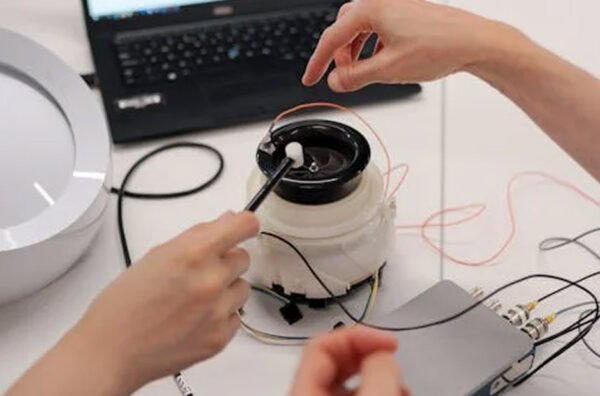For quite some time, credit card fraud has been an issue. And the growth in credit and debit card usage has resulted in an exponential rise of it. Even though banks have developed security features to avoid such things, fraudsters are constantly on the lookout for new methods to defraud people.
In fact, the amount of money lost to it reached an annual figure of $10 billion. However, by using machine learning technology, organizations may soon be equipped with the ability to combat the problem better.
Machine learning (ML) and credit fraud detection are two topics that go hand in hand. This blog will look at how machine learning is used to fight credit fraud.
Table of Contents
What Is Machine Learning?
Machine learning is responsible for the algorithms that allow computers to learn and make predictions based on large datasets.
It is a relatively recent concept, and it’s continuing to be developed. Machine learning algorithms are trained with data sets to improve and be more accurate with each use.
For example, machine learning played a role in the recent discovery of gravitational waves. And at Facebook, machine learning is used to detect which user photos are likely to garner the most attention. Machine learning is also revolutionizing the world of medicine.
You can gain a lot from a machine learning system, but it also has its limits. It doesn’t always work when the trends are unclear or if there are missing variables. It is easy to depend on ML for its accuracy and efficiency.
If a model is trained with the same hyperparameters and dataset, a ML model registry will ensure that the model runs precisely the same way. A model registry is a perfect place to store critical information about a model and its training data.
A model registry is a compiled list of algorithms and their associated parameters. A model registry brings a unique rigor to model versioning, promotion, and deployment. It allows a seamless deployment and control model without extra effort.
Machine Learning in Credit Fraud Detection
Learning how machine learning works in credit card fraud is a pretty important topic for businesses. Especially as we move further into the digital world.
Knowing how the process work will allow businesses to sense potential fraud or attacks early on. This is because fraudsters just basically reverse the firewalls and security. That being said, let’s look at how ML works in fraud detection.

1. Detection Through Machine Learning Models
Phishing is a typical fraud tactic in which a person tries to trick the recipient into providing personal information that hackers may subsequently use to hack systems. Machine Learning models can distinguish between legitimate and scam email accounts by examining the parts of an email and categorizing them as genuine or false.
Credit fraud and transaction theft are two more methods in which criminals utilize obtained information needed to complete transactions that do not need the usage of a physical card, such as online purchases.
Machine learning models can help avert these situations by assessing the customer’s previous behaviors, such as purchase quantities, locations, and kinds of assets, and flagging any strange transaction.
False requests and forgeries of documents can lead to the formation of credit cards and accounts associated with the sufferer, who is then held liable for the payments. Neural network models may be trained to distinguish between these bogus identities, and the request must be approved before it is approved.
The heart of the algorithm is a deep neural network, which takes in data and calculates the probability of fraud by using pattern recognition in the data. The neural network uses logistic regression to determine variables such as past behavior, income, and delinquent history, and it then weighs them to determine a person’s likelihood of fraud.
2. Detection by Using Advance Machine Learning Algorithms
Deep learning is a subset of machine learning that includes a variety of methods. Rather than task-specific methods, it is built on learning representations of data.
It involves using computer algorithms to detect fraudulent transactions that malicious users may initiate on your website and other online platforms. To see fraudulent transactions, the algorithm is trained to recognize the typical patterns of fraudsters and malicious users.
Also, it is trained to identify the solution to this problem. The algorithm is then tested using large data sets. If the results from the test are positive, the algorithm can be deployed to detect fraud on your website.
It is essential to test the algorithm on different data sets because fraudsters constantly change how they commit fraud. So the algorithm must be adaptive.
There are three steps to building a fraud detection machine learning model:
- Define how you define fraud.
- Create a machine learning model.
- Use the machine learning model to predict when the scam is happening.
Deep learning gets better with each transaction and new data, so we don’t have to worry about the learning process taking too long or the machines getting tired. It is much more effective than human error.
It is used in charging card payments and online transactions. Backpropagation is used to train the system over a period. A deep learning algorithm can be applied to clean the data by removing all the noise.
Final Thoughts
Machine learning is an artificial intelligence technique that is data-driven. It’s been around for a long time, but it’s now used in new ways to solve data problems that were previously considered unsolvable. It includes issues like natural language processing, image recognition, and credit card fraud detection.
It is a type of prediction that involves a computer making a prediction based on a sample of data to make informed future decisions. In financial services, it is used to detect fraudsters. Machine learning has been used to determine the fraudulent behavior of credit card users.
It works by allowing the computer to read previous transactions, and once the pattern of fraud is identified, the computer can prevent the cardholder from committing any future fraud. It can save financial companies a fortune.
It is best to use a machine to do something for you to save time and energy. Detecting credit fraud is a task that takes a long time to do. Luckily, since computers do the work, it only takes a few minutes. So, whenever you need to detect fraud, use machine learning. It’s fantastic and will save you a great deal of time.





